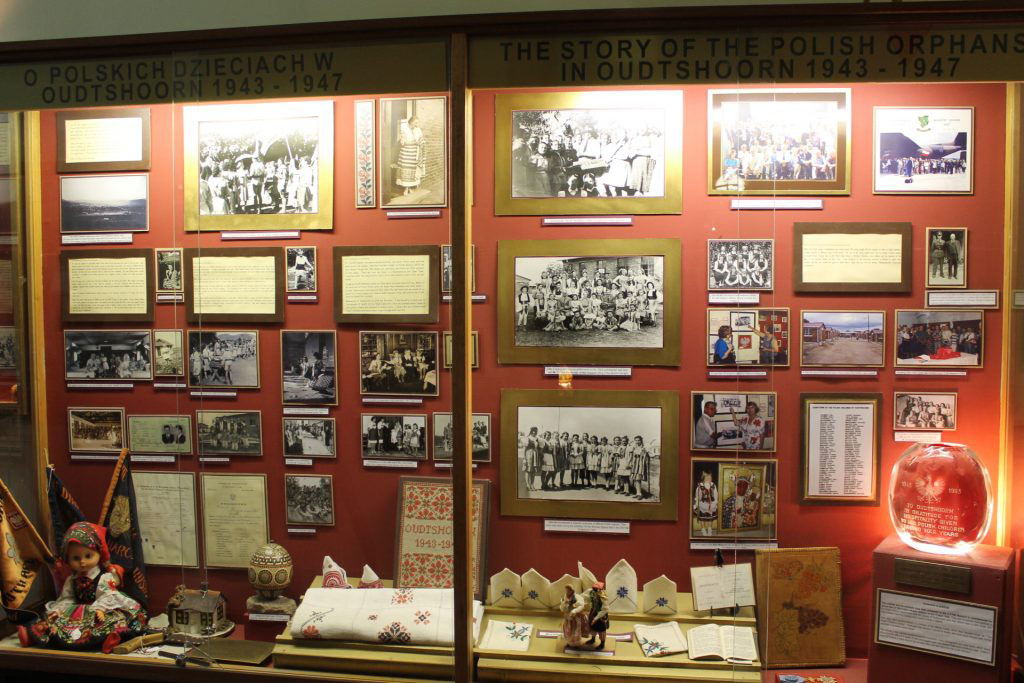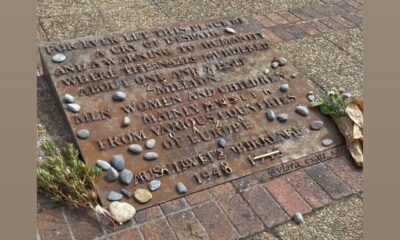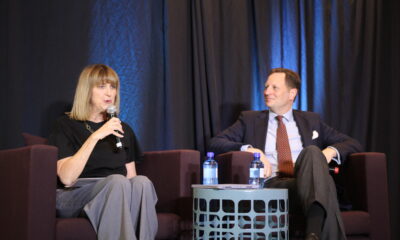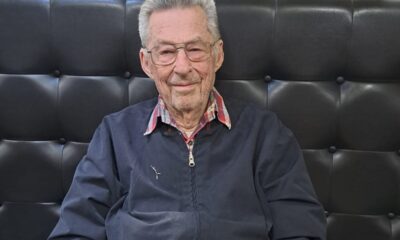
Banner

Oudtshoorn museum honours rescue of Polish WWII orphans
Published
1 year agoon
A little-known Holocaust-era story of rescue, survival, and finding refuge in South Africa will now be remembered in a quiet corner of Africa. On 6 March, the CP Nel Museum in the town of Oudtshoorn in the Western Cape announced that it planned to erect a new monument to commemorate the history of 500 Polish children who escaped Siberia and came to live in Oudtshoorn in the Western Cape during World War II, exactly 80 years ago. It’s estimated that almost one-third of these children were Jewish.
One of these children was Irena Schneider’s father. At an event at the Johannesburg Holocaust & Genocide Centre (JHGC), she described how as a child, she hardly ever heard her father, Stanisław Korzynski, talk about his experiences during the war. It was only after he died that she discovered a briefcase in his bedroom cupboard. It contained pre-World War II Polish money, school notebooks, a prayer book, photographs, his South African naturalisation card, and letters from her grandmother in Poland.
She described it as “a personal time capsule. It helped me understand his past trauma and why it was difficult for him to talk about [it].”
The 500 children, along with 51 adult medical personnel, teachers, and support staff, were first evacuated to Iran, after which they were transported on the SS Dunera to Port Elizabeth where they arrived in April 1943. From there, they were moved to the Karoo town of Oudtshoorn on 10 April 1943.
At the time, a British newsreel described how “The Polish flag flies over the sun-drenched South African Karoo in Oudtshoorn, where a camp for Polish refugee children has been set up. The youngsters looked fit, well, and happy in their new surroundings. Plenty of sunshine and the heat of the Karoo have worked wonders with these children, who have already endured the horrors of war.
“But life in the camp isn’t just a holiday,” the newsreel continued. “The children work to make the camp a self-contained unit. Not many Polish schoolbooks were brought to South Africa, and copies are made to supply the children. Their education will not be neglected. A number of children learned recently that their fathers are safe and serving in the Polish forces. The children can now hold their heads high. They have hope in the future.” Children are seen presenting guests with ostrich feathers and eggs, symbolising the ostrich-trade lifeblood of the town.
How did children born in Poland come to find safe haven in the Little Karoo? It all began on 17 September 1939, two weeks after the German invasion of Poland, when Soviet troops swiftly occupied the eastern half of Poland and annexed the area to the Ukraine and Belorussia. Beginning in the winter of 1939 to 1940, Soviet authorities deported more than a million Poles, many of them children, to various provinces in the Soviet Union. Almost one-third of the deportees were Jewish.
The story continued in the summer of 1941. The Polish government in exile in London received permission from the Soviet Union to release several hundred thousand former Polish citizens from labour camps, prisons, and forcible resettlement in the Soviet Union, to organise military units among the Polish deportees, and later to transfer Polish civilians to camps in the British-controlled Middle East and Africa.
In 1942, the London government, acting through its Consul General Dr M. Stanislaw Lepkowski, secured permission from the Jan Smuts’ government of the Union of South Africa to transport 500 of the estimated 220 000 to 250 000 children to that country. In 1943, after they had been evacuated through the southern Soviet republics to Iran, the children were brought to South Africa.
And so, the Polish Children’s Home, called Dom Polskich Dzieci, was organised in Oudtshoorn for their temporary accommodation, care, and education. It was located on what is now South Africa’s Infantry School Army base, and run under the supervision of the South African department of social welfare, as well as Polish consular and ministry representatives. It remained in operation until 1947. Some of the children were reunited with their extended families, and others sent to schools around the world.
“These children came to form the core of the Polish community in South Africa,” said Stefan Szewczuk, the president of the Polish Association of Siberian Deportees in South Africa, who is also the descendent of two of the Polish deportees. He was also speaking at an event at the JHGC in 2019. These second, third, and fourth-generation deportees call themselves “Oudtshoorniacy” in honour of this history.
The CP Nel Museum already houses documentation from the orphans and their families, and exhibits some photographs of the Polish orphanage. In addition, the museum is partnering with the Polish Association of Siberian Deportees to preserve this heritage.
The Ditsong Museum of Military History displays a poster, printed on canvas, titled, “The Polish Children of Oudtshoorn – their story in brief.”
The Oudtshoorn community and its Catholic congregation in particular, received the children warmly and donated all manner of equipment, clothing, and money. During holidays, children were invited to stay at the homes of local residents, and a holiday home at Groot Brak was also made available to them. Cultural activities played a big part in their lives including the establishment of a successful choir and dance groups that enthralled audiences in the area and throughout the country.
The intention was to return the children home to Poland once the war was over. However, at the Yalta Conference of February 1945, the fate of Poland was sealed when the country came under Soviet influence and was destined for communist rule. Thus, it was decided to assimilate the orphans into South African society by sending them to schools around the country.
The girls were sent to convent schools while the boys to various technical schools. In spite of the painful circumstances of their youth, some of these Polish children rose up to become significant achievers in their fields. For example, two of these orphans, Leonard Ryniewicz and Mark Masojacia, who graduated in engineering, offered valuable support to Project Designer Professor Michal Zekrzewski in the construction of the new Durban Harbour passenger terminal.
In the years following the closure of the Polish Children’s Home in Oudtshoorn, some of the orphans formed the Polish Association of Siberian Deportees in South Africa and re-visited the town on special occasions. On the 50th anniversary, they launched a new book, We have survived, which is described as “a diary, recollection, and also a historical source for all generations who might be interested in our saga”.
“For many years, the CP Nel Museum has maintained a good working relationship with the Polish Association of Siberian Deportees and supports its annual reunion every year at the museum,” said the CP Nel Museum, in announcing the new memorial. “It came as good news when the association forwarded the request to erect the monument. The museum is currently compiling an application to Heritage Western Cape for a permit.”










